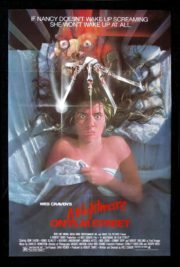“Evil Has A Destiny” – Unmasking Rob Zombie’s Halloween
Amidst a genre bloated with remakes and reboots, Rob Zombie’s 2007 reimagination of John Carpenter’s seminal slasher film, ‘Halloween,’ carves out its brutal vision of an iconic horror tale. The film excavates the origin story of the infamous Michael Myers, his disturbed childhood, and his bloodthirsty homecoming to Haddonfield. With Zombie’s heavy metal sensibility, ‘Halloween’ aims to unnerve a new generation of viewers, while inviting diehard fans to peer into the darker corners of Michael’s twisted psyche, sans the suspenseful subtlety of its 1978 predecessor.
Atmospheres of Anguish
The Craft of Fear
Rob Zombie’s ‘Halloween’ strays from Carpenter’s understated horror, opting instead for atmospheric heaviness soaked in inevitability and dread. The film’s visceral violence leads the onslaught, overshadowing any shroud of mystery with its straightforward savagery. Zombie paints a mural of horror through unflinching brutality and a visual aesthetic that celebrates the macabre, enabling a relentless tone of desolation and despair.
Through the Lens of Terror
The cinematography of ‘Halloween’ often utilizes handheld shots that convey a raw, intrusive quality, as if viewers are complicit voyeurs to Michael’s madness. A grungy color palette of autumnal oranges and steels blues permeates the film, echoing Michael’s cold yet fiery rampage. Special effects are practical and gore is abundant, grounding the horror in flesh and blood reality. The film is sporadically punctuated with singular visuals, such as the stark white of Michael’s iconic mask amidst the darkness, etching lasting impressions in the minds of its viewers.
Sounds of a Shadow
Zombie’s auditory landscape is a cacophony of discomfort, where the eerie silence is as unsettling as the abrupt clamor. His use of sound invigorates fear, with tense strings and startling stingers enhancing moments of terror. The original ‘Halloween’ theme is woven throughout, but it’s the diegetic sounds — the heavy breaths, the crunch of bone, the whimpers of victims — that amplify the film’s ferocity.
The Mask and the Man
Characterization and Performances
The character depth in Zombie’s ‘Halloween’ is as divisive as it is detailed. Where Carpenter’s Michael Myers was the enigma, the “Shape,” Zombie provides a backstory, suggesting the monster within is a product of his environment. This approach allows for an exploration of characters not traditionally fleshed out, creating a platform for robust performances, particularly from young Daeg Faerch, who portrays the disturbed child version of Michael with unnerving effectiveness.
Horror Typology
Zombie’s ‘Halloween’ is drenched in slasher conventions — the relentless killer, the imperiled woman, the inescapable past. Yet, it also delves into psychological horror as viewers witness the disintegration of young Michael’s sanity. The film thus operates on dual fronts: showcasing the butchery while probing the psyche of a murderer. The emphasis on brutality can, at times, feel overwrought, taking a cleaver to the suspense that made Carpenter’s original so chilling.
Methods of Madness
To instill fear, ‘Halloween’ leans heavily into graphic displays of violence and gore which may repulse as much as they terrify. This reliance on shock does not always pay off with the finesse of the film’s heritage — it is horror that bludgeons rather than slices, and the impact varies depending on the viewer’s palate for bloodshed.
Evil Revisited: Legacy and Relevance
Themes Under the Surface
Zombie doesn’t shy away from imprinting societal subtexts onto the film, exploring themes of family dysfunction, mental illness, and the nature of evil. Though not always subtly, ‘Halloween’ posits that within the vapid landscape of neglect, abuse, and bullying, monsters are made. It’s a grim commentary, woven seamlessly into the tapestry of terror.
A Nightmare’s Worth
Zombie’s gritty exploration of an iconic horror figure polarizes audience opinions on its effective terror. ‘Halloween’ achieves a disorienting horror experience for viewers who revel in explicit violence, although it may falter for those seeking the haunting suspense of its progenitor.
For Whom the Bell Tolls
Fans of Zombie’s other films and devotees of gore-centric horror will find ‘Halloween’ a twisted treat. Conversely, traditionalists loyal to Carpenter’s minimalistic approach may find this version discordant with the subtlety they admire. It’s a film for those with an appetite for grime and blood-soaked lenses.
In the Shadow of Giants
Zombie’s reimagining cannot escape the looming shape of the original masterpiece. It stands as a contemporary grisly spectacle amongst other post-millennial horror remakes, sharing more DNA with the ‘Saw’ franchise than the subtle thrills of 1978’s Haddonfield.
Unveiling the Verdict
Zombie’s ‘Halloween’ is both an unflinching homage and a controversial revision. It is rife with raw emotion, stark performances, and relentless carnage. While it delivers on the front of modern horror’s penchant for visceral thrills, it simultaneously dismembers the essence of creeping dread. This reimagining will leave some viewers hiding behind their hands — either in fear or in disappointment.
Recommendations come with caveats; this film is indeed not for the faint of heart, or for purists seeking the ghostly subtlety of the original. The film is a shadow of its forbearer, certainly darker, but in whether that darkness is an improvement, audiences will remain divided. Those with an eye for the macabre might just bear witness to a guilty pleasure. For the uninitiated, tread carefully through the blood-drenched leaves of Rob Zombie’s ‘Halloween.’




